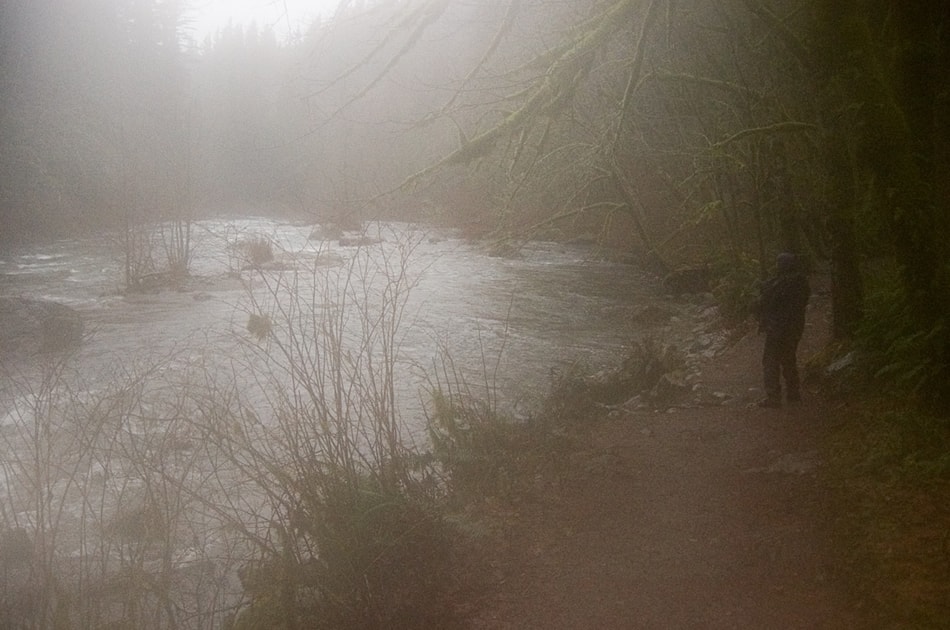Successfully Dealing With the Scourge of Fogged-up Lenses
No one wants fogged-up lenses ruining their shots, but the reality is that many photographers still struggle with this basic problem. So how can you successfully tackle it?
Being prepared helps, as does expecting that not everything will go off without a hitch during any shoot. Beyond that, it also helps to realize that fogged-up lenses can happen in a variety of locations and situations. Much of the time, though, fogged-up lenses tend to occur in coastal as well as tropical locales.

photo by pfly
When it comes to the scourges of photography, none is perhaps more annoying than foggy lenses, especially when you’re on vacation… in a hotter climate. Here’s how to nip annoying lens fog in the bud, once and for all.
Preemptive Action Is Key
For anyone who’s ever had to deal with a foggy lens repeatedly, he knows this to be true: It’s too late to fix the problem once it’s occurred. In other words, once your lens fogs up, your shot will be ruined already. Though it can sometimes gives a rather nice smooth effect.
And, no, just waiting for the lens to get used to its surroundings can really be a huge waste of time, as there’s no telling how long it’ll take for your lens to get used to the environment. It can be a short time, as in minutes, or even some hours.
Clearly, the most efficient way to handle this is to let your lens get used to the surroundings, but in the fastest way possible. That’s what we’re going to take a look at right now.
Bags and Other Carrying Cases Are Unhelpful
Bags are the enemy when it comes to lens fog. Here’s why: They prevent air in the climate from touching your lens, thus ensuring that only the cooler and drier air inside the bag actually affects your lens. As such, the process of adjusting your lens to the air in the environment you’re in will take much longer.
So don’t keep your lens in your bag or case when you’re at your shooting destination. This applies wherever you are, whether that’s in a hotel room or outside in the field. Make sure you also carry a few silica gel moisture absorber packets in your camera bag to reduce the humidity levels in your bag.

photo by guldfisken
Using Hand Warmers
Keeping lens fog away can also involve making your lens warmer. This stands to reason since the lens fog is caused by the air that’s colder than the air immediately around your lens! That’s why hand warmers are an ideal solution: They will warm up your lens quickly, don’t cost much at all, and are readily available in a lot of stores. Talk about an accessible solution to this problem.
Once you have your hand warmers, simply wrap your hand warmer around the lens barrel and keep it in place with a rubber band or two. Warming up the air around the lens takes just a short time, and it’s a quick fix that’ll reconcile the air around your lens with that of the environment in which you’re shooting.
Taking Away Caps and Filters
Pop quiz: Where’s the part of your lens where you’re likely to have the most ardent issue with lens fog appearing? Answer: It’s the front of your lens, for an obvious reason.
This is where you normally stick your lens cap or filter, thereby not allowing this section of your lens to naturally adjust to the air in the environment around it.
It just stands to reason that the front of the lens, then, is where you should spend a great deal of time getting the lens used to its environment. Start by removing the cap or filter if it’s on your lens. The last thing you want is to have the cap or filter preventing any warmer or more humid air from touching the front of the lens since this contact will help the lens get used to the air in the environment.
The Camera in the Trunk of Your Vehicle
As we said earlier, lens fog tends to occur in warmer climates, as when you’re on vacation. So when you’re on vacation and driving around to see the sights of your destination, keeping the camera in your trunk is an effective way of dealing with lens fog. How so?
Well, the trunk of a vehicle is generally a warm and humid spot, very much away from the air conditioning of your car. This makes it an ideal place to get the lens to adjust to the warmer air of your surroundings.
Should you want the camera near you, should you unexpectedly come to a fantastic shooting opportunity while you’re driving, that’s not a problem either. Just turn the air conditioning in the car off, and roll down your windows. That way, the lens can also begin to get used to the environmental air more efficiently.
Sometimes, You Can’t Be Preemptive
Try as you may, on occasion, it’s just not possible to always keep the lens fog away before it strikes! In these unfortunate situations, you’ll have to make do with what’s left, and that’s responding to the fog. You generally have two choices.
One, you can always rely on microfiber cloths to wipe the fog away, but this is not a permanent fix since the fog typically returns. So get ready to repeatedly wipe the fog off of your lens. If you’re lucky and the fog isn’t too severe, wiping it off can allow you enough clearance to shoot a couple of photographs in between the lens fogging up again.
Then, your other alternative is, you guessed it, post-production. However, your photograph must not have too much condensation to be saved in post-production. If it only has a moderate amount, you may be able to boost the clarity and contrast in Lightroom, as well as potentially enhance the color of the picture or use the new “dehaze” feature in Lightroom.
Knowing How Lens Fog Is Created
Knowing how and when lens fog comes along is half the battle, really. When you’re in a warmer locale with your camera, there’s a surefire chance that you’ll have to deal with fog, so knowing this, you can begin to make the necessary adjustments we talked about earlier to cope with it.
If you’ve tried everything, but the lens fog still appears and creeps into your shots, you can always try some post-production magic to try and cope with it as well.
Lens fog isn’t the end of the world, but you clearly want to keep it out of your pictures as much as you possibly can. Obviously you’ll still want to look into keeping your camera in a dry box when you get back home to reduce whatever damage the humidity and moisture may have cause your lens.
